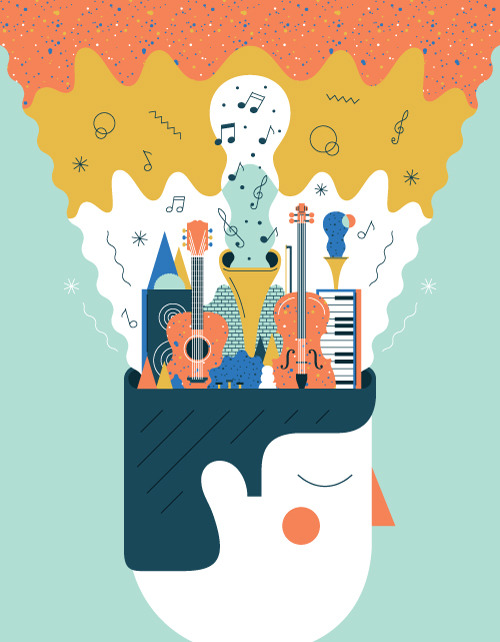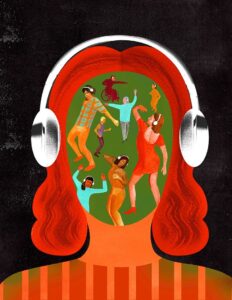
Have you ever listened to a piece of music and experienced a strong emotional or physical response? Imagine this: you are sitting in the passenger seat with your travel playlist on, looking out the window, and pretending to be in a music video. Don’t we all do that? Add to that, you nod your head to the rhythm, your hands mirror the contours of the music and surprisingly, most of this happens subconsciously. That’s because, as said by Taruffi, music is a ubiquitous phenomenon among human cultures, with the power to evoke and regulate emotions.
How can something so intangible have such a strong effect on us?
Listening to sad music when one is experiencing similar emotions induces a rather pleasurable feeling. This is elucidated by the fact that music-elicited tears bring about not only physiological arousal but also, cause a cathartic effect. The emotional experience of shivers or goosebumps while listening to music involves psychophysiological arousal and a rewarding effect, due to the release of dopamine, a naturally occurring happy chemical in our bodies. The interesting part is, it’s also released when we anticipate the exciting moments like when a song is about to hit its chorus.
Each person’s perception of music or a song is subjective, as it is often related to the memories and experiences associated with that tonal pattern. However, well-established sciences of mathematics, physics, and biology dive deep into various properties of music such as pitch, timbre, loudness, tempo, and the emotions they induce, to paint a larger picture of this universal form of art. To sum it up, a loud sound with a high pitch and a fast tempo would be associated with a generally positive emotional valence, happiness, excitement, or triumph; and happy music generates more zygomatic facial muscle activity and greater skin conductance. However, a soft and quiet one with a low pitch, often leaping down an octave, with a slow tempo would often reflect a generally negative valence, fear, melancholy, or tenderness. A complex tone colour with multiple overtones of an over-driven electric guitar expresses power and anger, in contrast to a simple tone colour of a flute portraying pleasantness and peace. A low-pitched sound with wide variations in loudness, if especially quick, would evoke fear, as observed in the ‘Jaws’ shark theme.
Having been created in a social context and being a means of communication, music has helped the masses cope with the pandemic. As COVID-19 has fostered fear and tension worldwide, everyone is looking for ways to mitigate that stress and boost the immune system to ward off the debilitating repercussions of the viral infection, by establishing and functioning in the mind-body connective pathway. Furthermore, listening to music under physically stressful situations reduces the rate of perceived exertion by shifting the focus away from feelings of discomfort. In the neurophysiological context, it can be observed that a piece with a slower tempo and major notes is useful for calming frayed nerves, decreasing blood pressure, and settling the heart rate. Although music may not be the main focus of attention in these situations, people intuitively know how to choose and match it to their cognitive and emotional needs.
You may not have a time machine to travel back in time, but you do have music, to help you revisit certain moments of life.
Possessing no linguistic barriers, music is a very profound and universal language, being very personal and social at the same time. Cultures and traditions may vary across the globe, but the myriad of emotions elicited are all the same, with music being an inextricable link connecting and harmonizing all living beings. It’s time we understood the real value of music and made the most of its power to make this world a better place.
Written by Isha Bhardwaj for MTTN
Edited by Anushka Das for MTTN
Featured Image by Andrew Groves
Artwork by Ellen Weinstein

Leave a Reply
You must be logged in to post a comment.